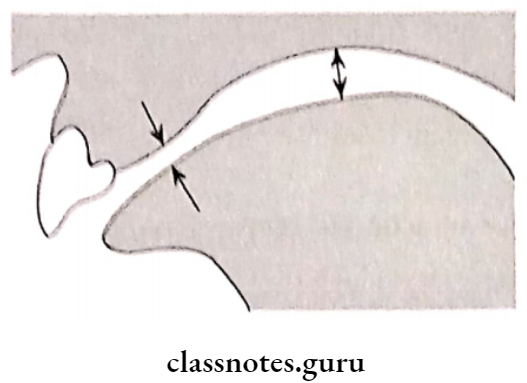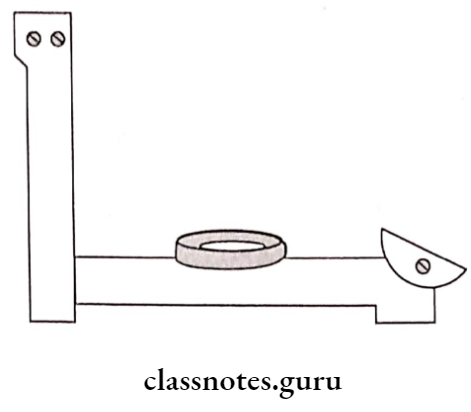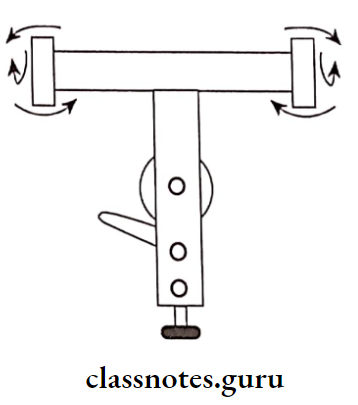Introduction to Laboratory Procedures
Laboratory procedures before try-in are critical for ensuring successful outcomes in dental prosthetics. This guide provides essential questions and answers regarding these procedures.
Complete Denture Wax Try-In Procedure
Laboratory Procedures Before Try In Short Answers
Question 1. Pre-Extraction Guides In The Selection Of Teeth.
Answer:
- The diagnostic cast is prepared before the extraction of teeth
- It provides 3 3-dimensional views.
- Photographs – Showing frontal and lateral views
- Limitation: Anterior teeth should be seen in the photograph.
- Radiographs: Accurate measurements are not obtained
- They provide only a 2-dimensional view
- Close relatives- If other methods fail
- Extracted teeth- Best method
- But all the extracted teeth are preserved.
Read And Learn More: Prosthodontics Question And Answers
Question 2. Compensatory curves.
Answer:
The anteroposterior and lateral curvatures in the alignment of the occluding surfaces and incisal edges of artificial teeth are used to develop balanced occlusion
- Steep compensatory curves for steep condylar path
- Shallow curves for loss of balancing molar contacts

- Thus balance must be present between all five factors
- The effect of incisal and condylar guidance must counteract the effect of the other three factors
- If the balance is lost, balanced occlusion cannot be achieved
Pre-Try-In Lab Procedures in Prosthodontics
Question 3. Color selection of teeth.
Answer:
Color For Anterior Teeth:
Age:
- Young people have lighter teeth
- Old people have Dark teeth
- More shiny
- Brownish tinge
- Habits Smoker’s porcelain teeth
- Complexion teeth selected in harmony with
Question 4. Factors in denture design affecting speech.
Answer:
- Denture wearers have shallow pronunciation In dentulous patients, rugae enhance speech
- In a denture wearer speech is affected due to the absence of rugae
- The use of metal dentures improves speech
- Injury to the external laryngeal nerve
- Presence of tongue tie

Production Of Various Sounds:
- Bilabial-b, p, m
- Labiodental-f, v
- Linguodental- th
- Linguoalveolar-t, d, s, z, v, 1
- ‘s’ sound is controlled by the anterior part of the palatal plate of the denture base

Question 5. Neutral zone.
Answer:
- Neutral Zone is the potential space between the lips and cheeks on one side and the tongue on the other side
- An area or position where the forces between the tongue and cheek or lips are equal
- If the teeth are placed buccally, it leads to cheek-biting
If the teeth are placed lingually, it leads to encroachment into the tongue space

Essential Lab Steps Before Denture Try-In
Question 6. Shortcomings of the plane line articulator.
Answer:
- An articulator is a single hinge joint
- No lateral or sliding movement is possible
- No guide for mounting the cast
- Single-use
- Difficult for prosthetic work as the metallic frame must be held together with the cast
- Removal of the cast is by breaking, which leads to loss of integrity of the cast and loss of strength of the articulator
Question 7. Incisal guidance.
Answer:
The influence of the contacting surfaces of the mandibular and maxillary anterior teeth on mandibular movements
- The second factor of occlusion
- Customized
- If overjet increases, it decreases. If overbite increases, it increases
- If incisal guidance is steep, steep cusps, a steep occlusal plane, and steep compensatory curves are required
- Incisal Guidance must be as flat as possible
Question 8. Condylar guidance.
Answer:
- Condylar Guidance is the first factor of occlusion to be considered
- Measured using protrusive registration
- Increased condylar guidance increases jaw separation
- Condylar Guidance cannot be modified
Question 9. Hinge axis
Answer:
- The Hinge Axis is also known as the transverse axis
- The hinge axis is the axis that runs horizontally from the right side of the mandible to the left
- Rotation around it is seen during protrusive movement. It varies during different phases of protrusive movements
- During the initial mouth opening, the hinge axis passes through the head of the condyle
- During later stages, the axis passes through the mandibular foramen
Question 10. Posterior teeth form.
Answer:
Factors Affecting Posterior Teeth Form:
- Condylar inclination
- Height of the residual ridge
- Patient’s age
- Ridge relationship
- Hanau’s quint
Wax Try-In in Complete Dentures – FAQ
1. Cusp Teeth:
- They have cusps and fossae-like natural teeth
- Anatomic teeth
- Resemble normal, newly erupted teeth
- Have the best aesthetics
- Havea 30-degree cuspal angulation
- Semi-anatomic teeth
- Have 20 or 10-degree cuspal angulation
- They are more flexible than anatomic teeth
- Anatomic teeth
2. Cuspless Teeth:
- Have no cuspal angulation
- Very flexible to set
Question 11. Anatomic teeth.
Answer:
Teeth that have prominent pointed or rounded cusps on the masticatory surfaces and which are designed to occlude with the teeth of the opposing denture or natural dentition
Advantages of Anatomic teeth.:
- Efficient cutting
- Balanced occlusion is obtained
- Guide the mandible in centric occlusion
- Aesthetic
- More resembles natural dentition
The Disadvantage Of Anatomic Teeth.:
Difficulty In Teeth Arrangement

- (a) Incisoe
- (b) Canine
- (c) Premolar
- (d) Molar
Question 12. Advantages of an adjustable articulator.
Answer:
- Capable of adjustability in all directions
- Have numerous adjustable readings
- Customized for each patient
- Have receptacles in which acrylic dough is contoured to form customized condylar and incisal guidance
Record Base and Wax Rim Preparation
Question 13. Buccolingual width of posterior teeth in the complete denture.
Answer:
- The buccolingual width of posterior teeth should be decreased to provide a proper path of escapement of food
- It should be such that the forces from the tongue neutralize the forces from the cheek
- If the buccolingual width increases, the rate of ridge resorption also increases
- Teeth with broader dimensions interfere with the tongue, leading to instability of the denture
- If the teeth are broader buccally, it may lead to cheek biting.
Question 14. Bilabial sounds.
Answer:
- Bilabial sounds are b, p, and m
- These are controlled by the lip support
- These become defective in the absence of lip support or with alteration in the vertical dimension at occlusion
Question 15. Hanau articulator.
Answer:
- Hanau Articulator is a semi-adjustable articulator
- Hanau Articulator accepts face bow transfer
- Hanau Articulator is capable of hinge and lateral movements
Hanau Articulator Parts:
- Upper Member:
- It is T-shaped
- The vertical arm runs anteroposteriorly, and the horizontal arm runs transversely
- Lower Member:
- It is L L-shaped structure
- The horizontal arm is a rectangular strip
- It has a dowel for attachment of the mounting ring
- The incisal guide table is located at the anterior end of the horizontal arm
- The vertical arm is sloping
- It contains a roll pin
- Condylar Guidance:
- It is attached to the upper member of the articulator
- It represents the glenoid fossa of the TMJ
- Incisal Guide Table:
- It is customized
- Incisal Pin:
- It is a double-sided pin.
- One end is sharp but chisel-like, with a flat edge
- The other end tapers to a pointed tip




Question 16. Beyron’s point.
Answer:
- The first step in placing a face bow is to locate the hinge axis on the skin on each side of the face
- One frequently recommended method is to position condylar rods on a line extending from the outer canthus of the eye to the tragus, approximately 13 mm in front of the external auditory meatus
- This is called Beyron’s point
- The placement generally locates the rods within 5 mm of the true center of the opening axis of the jaw
- The imaginary line joining two Beyron’s points is approx. hinge axis
- The posterior reference point is 10 mm in front of the external auditory meatus.
- 7 mm below Frankfort’s horizontal plane
- The anterior reference point is
- 7 mm from orbitale
- 25 mm from nasion
- 18 mm from the inner canthus of the eye
- 43 mm superior to the tip of the central incisors
Essential Laboratory Procedures Before Try-In Conclusion
Understanding laboratory procedures before try-in is vital for dental professionals. This question and format provides quick insights into best practices in the field.
